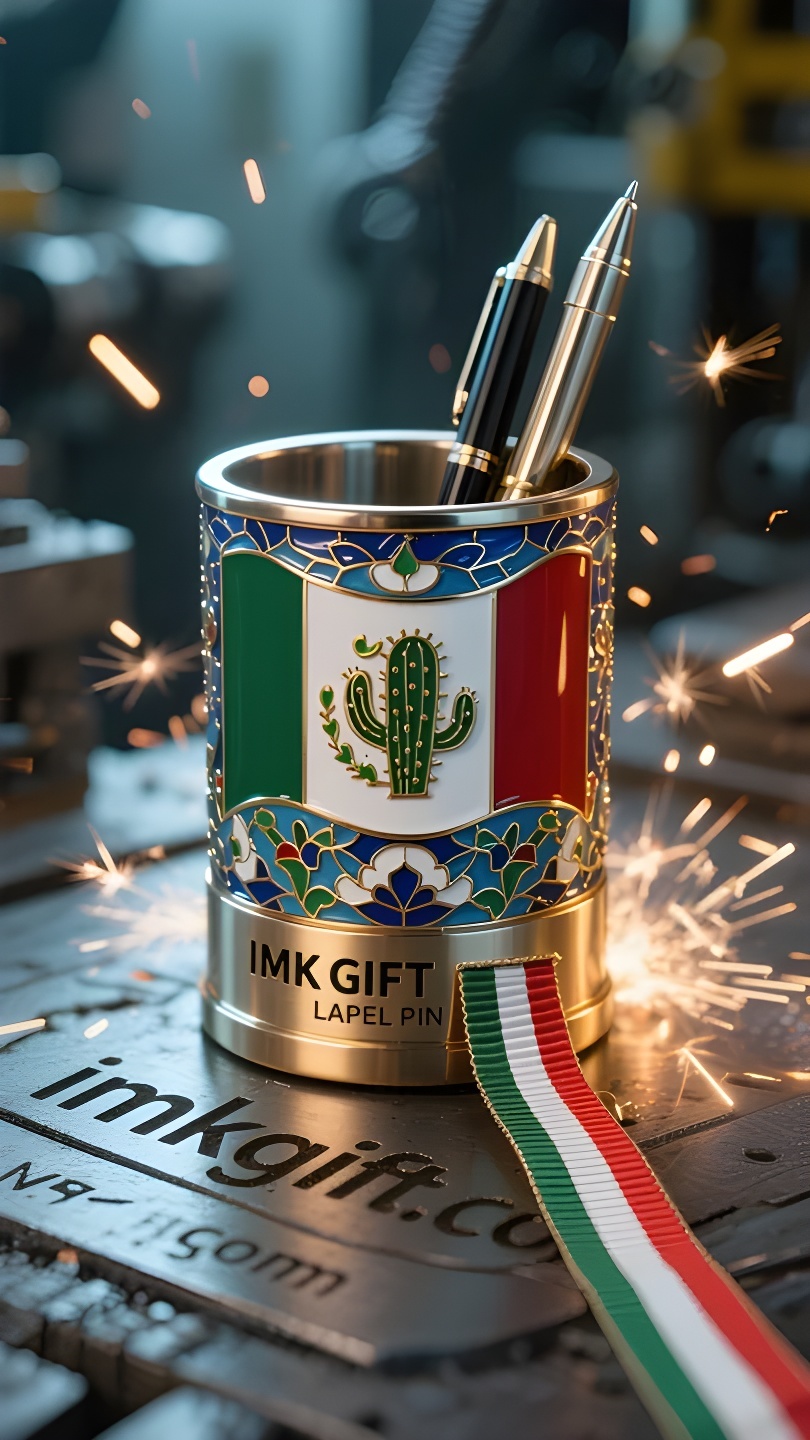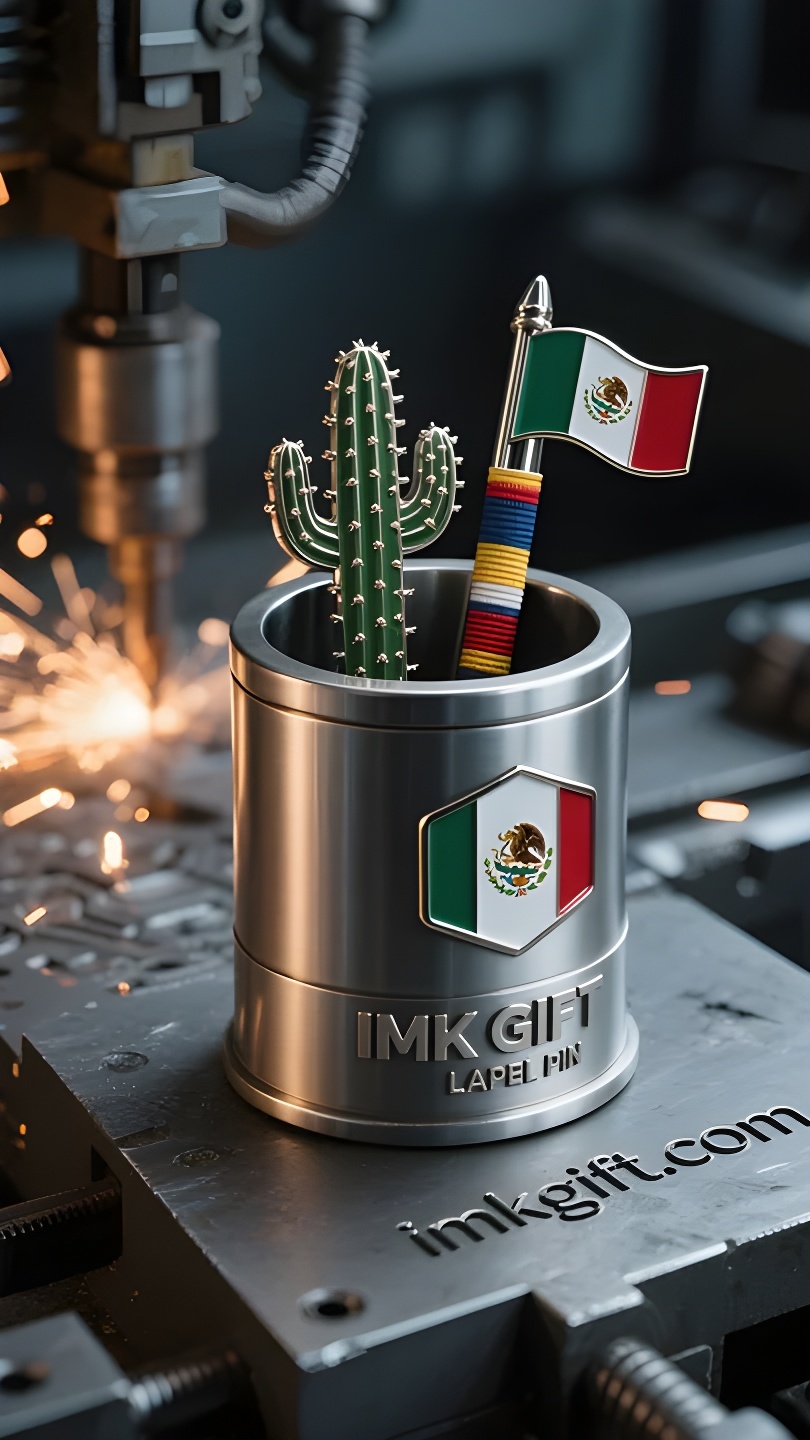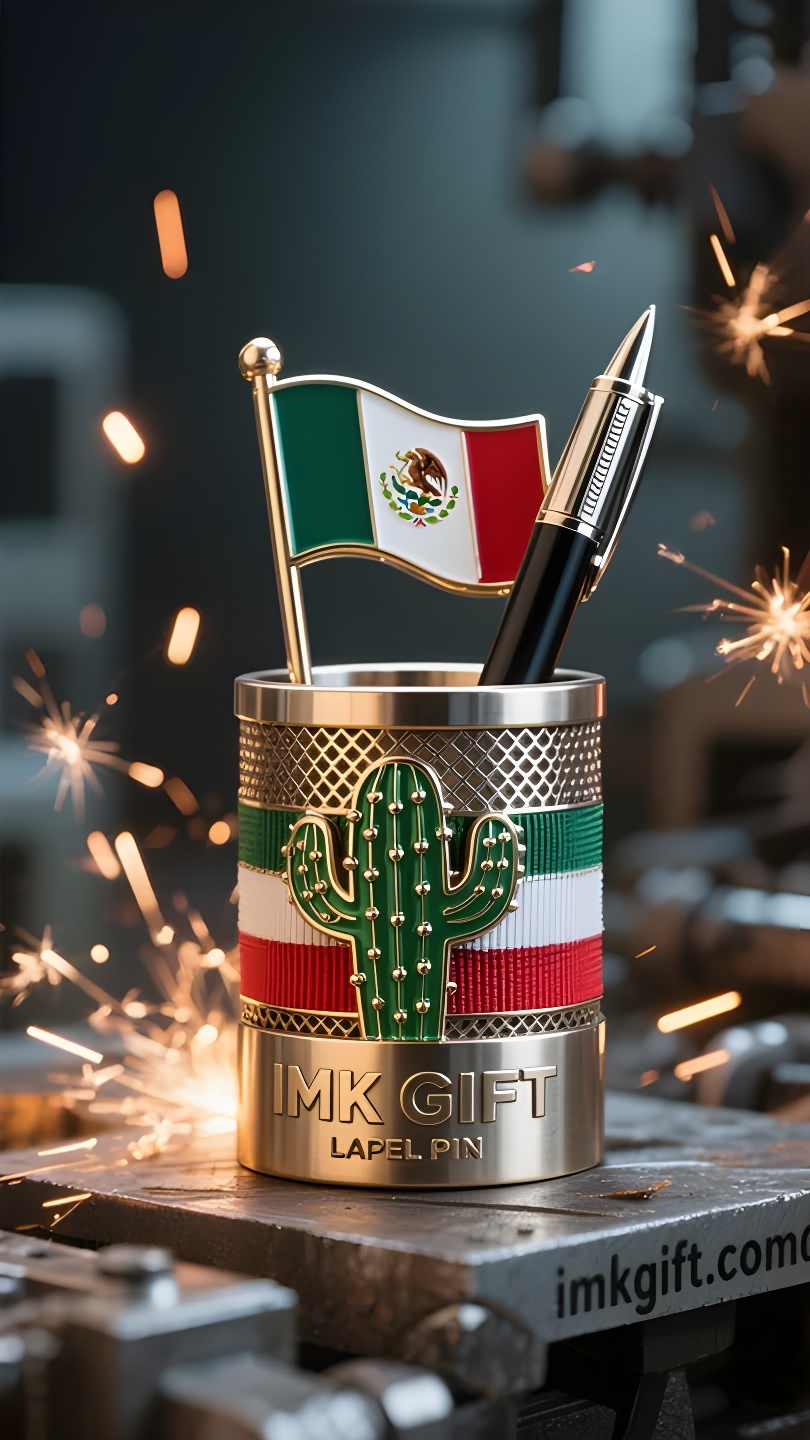in984-Un-pequeño-portalápices-esconde-montañas-y-ríos-la-columna-vertebral-de-México-en-un-cactus
▼
Cada febrero, entre las oleadas de rojo, blanco y verde en la celebración del Día de la Bandera Mexicana, siempre hay un verde oscuro y persistente que viaja a través del tiempo y el espacio: desde el cactus que sostenían los guerreros aztecas hasta el portaplumas del escritorio moderno, esta planta del desierto siempre ha sido un tótem concreto del espíritu mexicano. Según la leyenda, los aztecas descubrieron el milagro de un águila picoteando una serpiente en un cactus, y así fundaron la ciudad de Tenochtitlán. Quinientos años después, cuando el diseñador plasmó esta leyenda en el centro de la bandera nacional, el cactus espinoso se convirtió en el código espiritual de toda la nación: echando raíces en la aridez, floreciendo bajo el sol abrasador y usando espinas afiladas para proteger sus dulces frutos. Esta sabiduría de supervivencia se condensa en el portaplumas con forma de cactus, tan apreciado por los mexicanos modernos. El cuerpo de bronce fundido está cubierto de espinas afiladas que simbolizan la defensa, pero el espacio circular interior está lleno de plumas y tinta para escribir civilización. La filosofía de este portaplumas es como la historia del crecimiento de México: la férrea caballería de los colonos aplastó la antigua ciudad-estado, pero el calendario astronómico maya aún fluye en la punta de la pluma; la sangre de los revolucionarios tiñó de rojo la meseta, pero el espíritu de la constitución siempre brilla en el papel manuscrito. Todo escolar mexicano sabe que la verdadera fuerza no reside en la agudeza exterior, sino en la abundancia interior. Tal como nos recuerda el portaplumas de cactus: usemos el conocimiento como arma, la cultura como alimento y rieguemos nuestro propio oasis de civilización en el desierto del mundo. Cuando la luz de la mañana pasa sobre la bandera nacional del palacio presidencial, miles de portaplumas verde oscuro esperan en los escritorios. Declaran en silencio: la columna vertebral de una nación nunca está en la bandera ondeante, sino en la palma de cada mano que sostiene una pluma para escribir el futuro.
Every February, amid the surging waves of red, white and green at the Mexican Flag Day celebration, there is always a stubborn dark green that travels through time and space – from the cactus held by the Aztec warriors to the pen holder on the modern office desk, this desert plant has always been a concrete totem of the Mexican spirit. According to legend, the Aztecs discovered the miracle of an eagle pecking a snake on a cactus, and thus established the city of Tenochtitlan. Five hundred years later, when the designer cast this legend into the center of the national flag, the thorny cactus became the spiritual code of the entire nation: taking root in barrenness, blooming under the scorching sun, and using sharp thorns to protect sweet fruits. This survival wisdom is condensed into the cactus-shaped pen holder that modern Mexicans love. The bronze-cast barrel is covered with sharp thorns symbolizing defense, but the round space inside is filled with ink to write civilization. The philosophy of this pen holder is just like the growth history of Mexico – the colonists’ iron cavalry crushed the ancient city-state, but the Mayan astronomical calendar still flows on the pen tip; the blood of the revolutionaries dyed the plateau red, but the spirit of the constitution always shines on the manuscript paper. Every Mexican schoolchild knows that true strength lies not in outward sharpness, but in inner abundance. Just as the cactus pen holder reminds us: use knowledge as a weapon, culture as nourishment, and water our own oasis of civilization in the desert of the world. When the morning light passes over the national flag of the presidential palace, thousands of dark green pen holders are waiting on the desks. They silently declare: the backbone of a nation is never in the fluttering flag, but in the palm of every hand that holds a pen to write the future.
每年二月,墨西哥国旗日庆典上翻涌的红白绿三色浪潮中,总有一抹倔强的墨绿穿越时空——从阿兹特克战士捧起的仙人掌,到现代办公桌上的笔筒,这种沙漠植物始终是墨西哥精神的具象图腾。
传说中,阿兹特克人在仙人掌上发现雄鹰啄蛇的神迹,由此建立特诺奇提特兰城。五百年后,当设计师将这段传说铸入国旗中央,带刺的仙人掌便成了整个民族的精神密码:在贫瘠中扎根,在烈日下开花,用尖刺守护甘甜果实。这种生存智慧被浓缩进现代墨西哥人钟爱的仙人掌造型笔筒,青铜铸造的筒身布满象征防御的利刺,内部圆润空间却盛满书写文明的笔墨。
这只笔筒的哲学恰如墨西哥的成长史——殖民者的铁骑碾碎了古老城邦,但玛雅人的天文历法仍在笔尖流转;革命者的鲜血染红高原,可宪法精神始终在稿纸上闪光。每个墨西哥学童都知道,真正的力量不在于外表的锋芒,而在于内在的丰盈。就像仙人掌笔筒提醒的那样:以知识为武器,以文化为养料,在世界的沙漠里浇灌出属于自己的文明绿洲。
当晨曦掠过总统府的国旗,千万个墨绿笔筒正在书桌上等待。它们沉默地宣告:一个民族的脊梁,从来不在飘扬的旗帜里,而在每个握笔书写未来的手掌中。
▼
Contact Us
📞 Tel: +0086-760-85286839
📧 Email: sales3@imkgift.com








